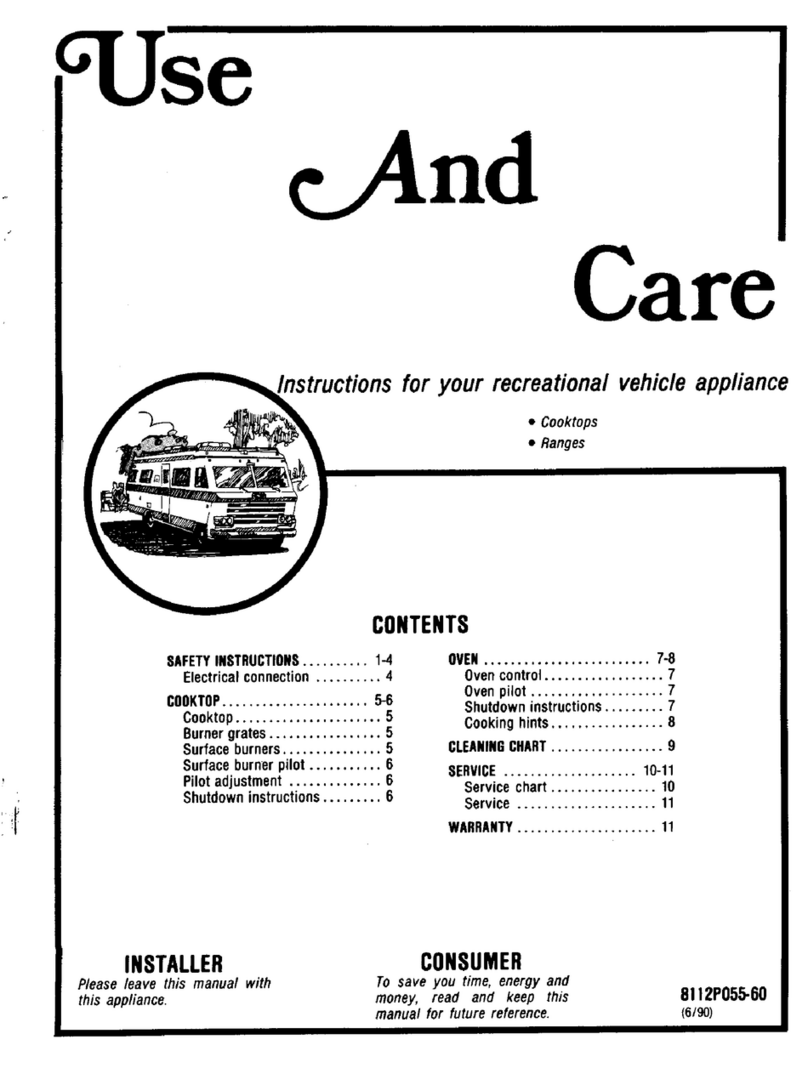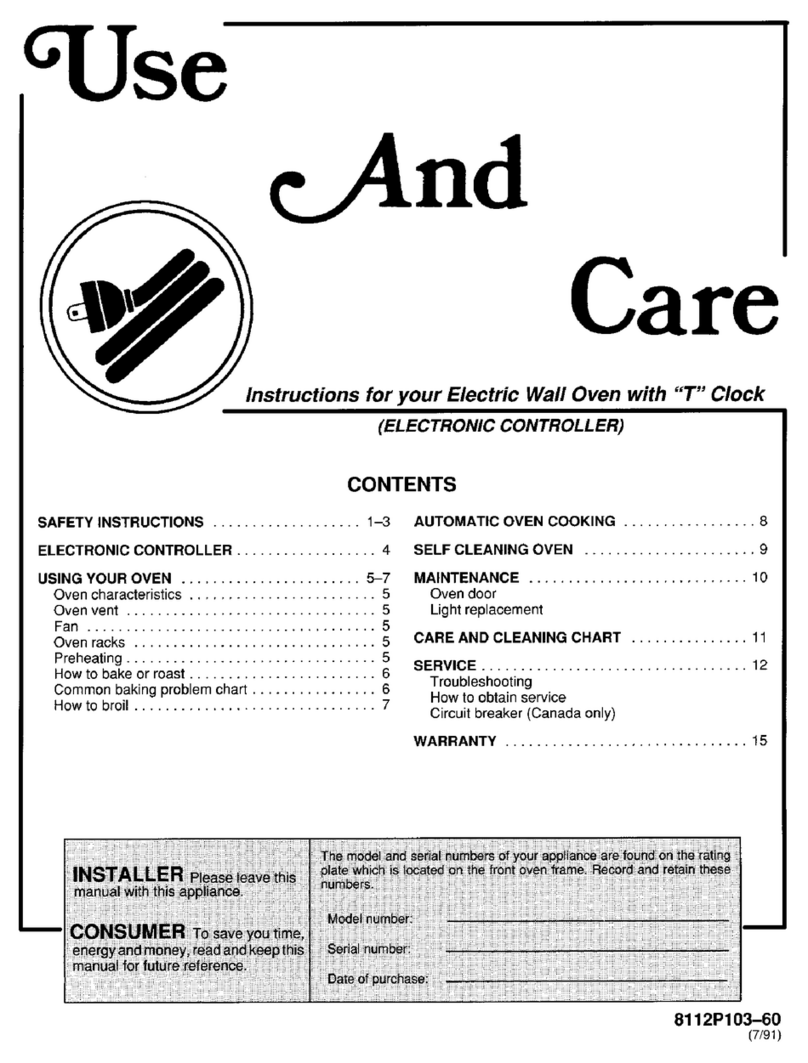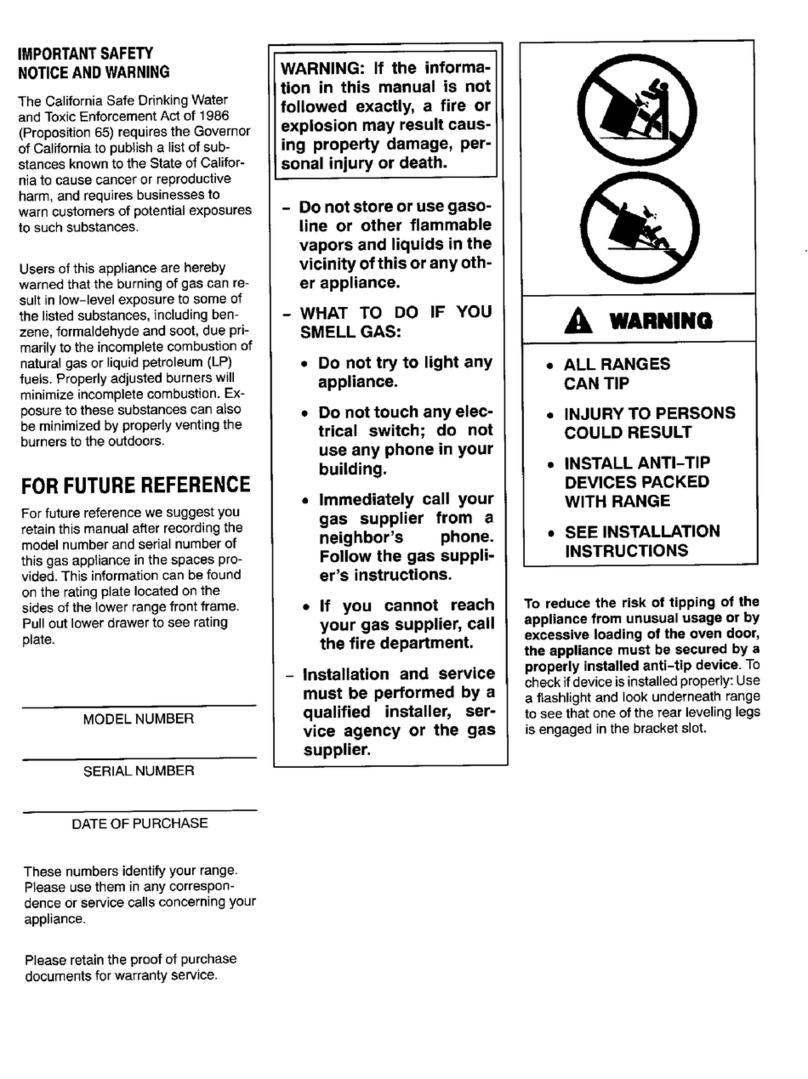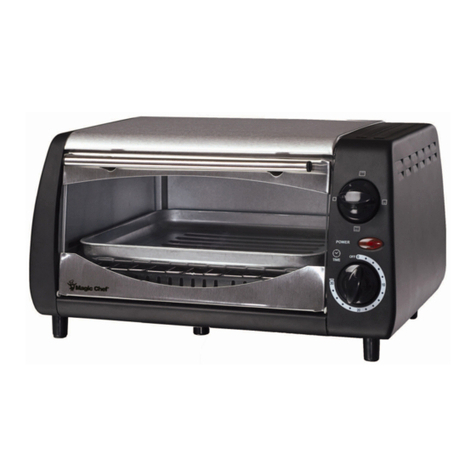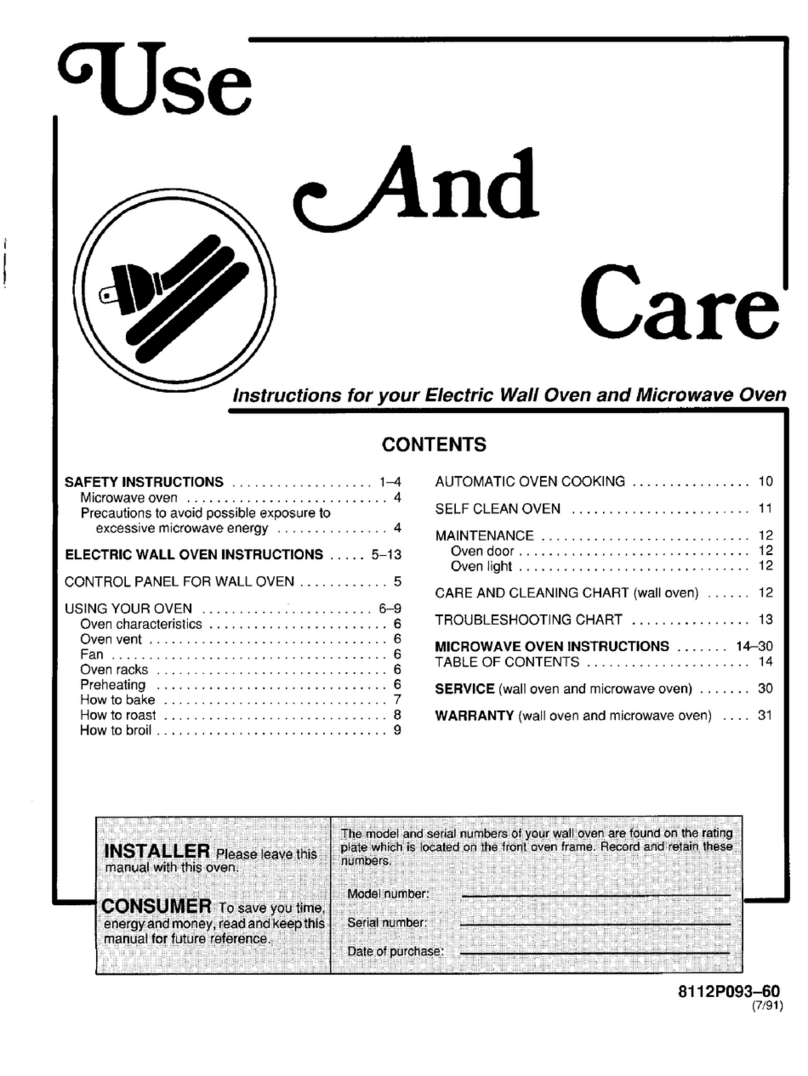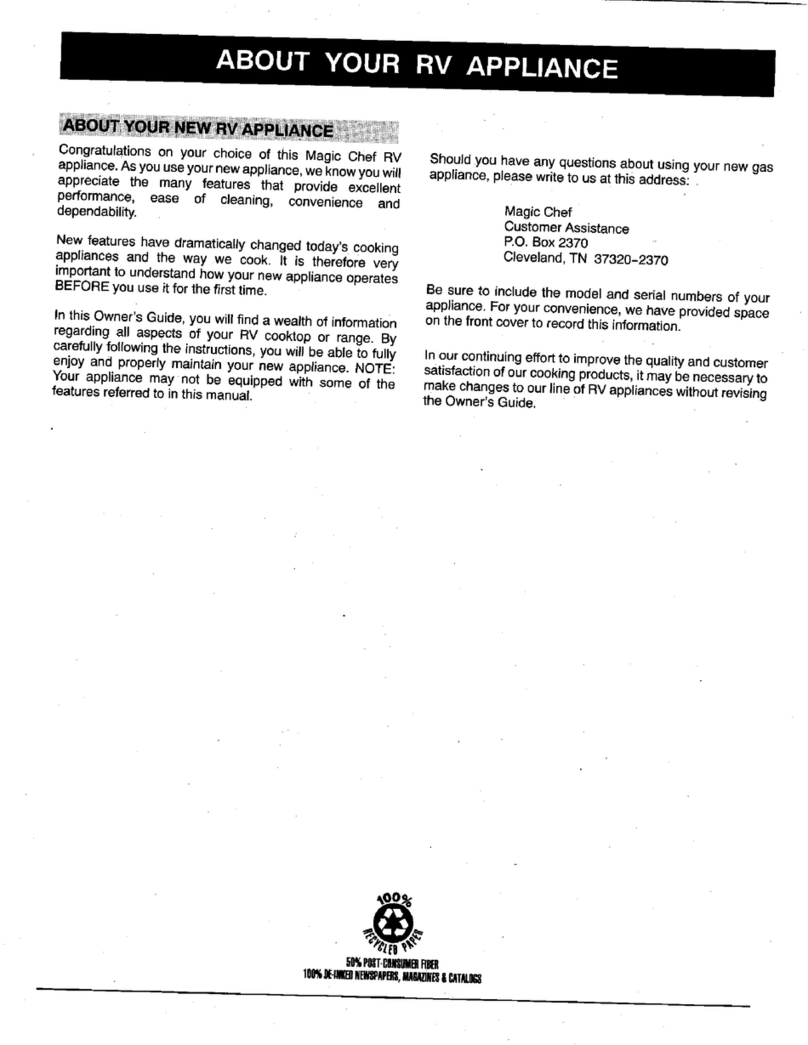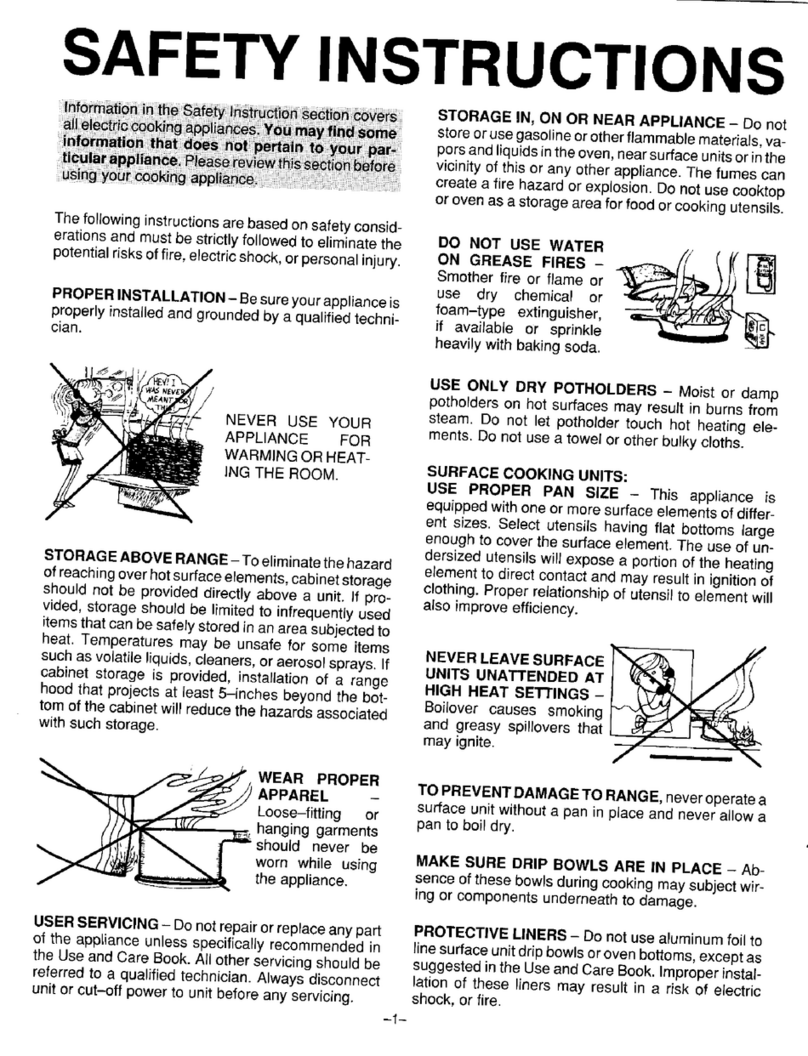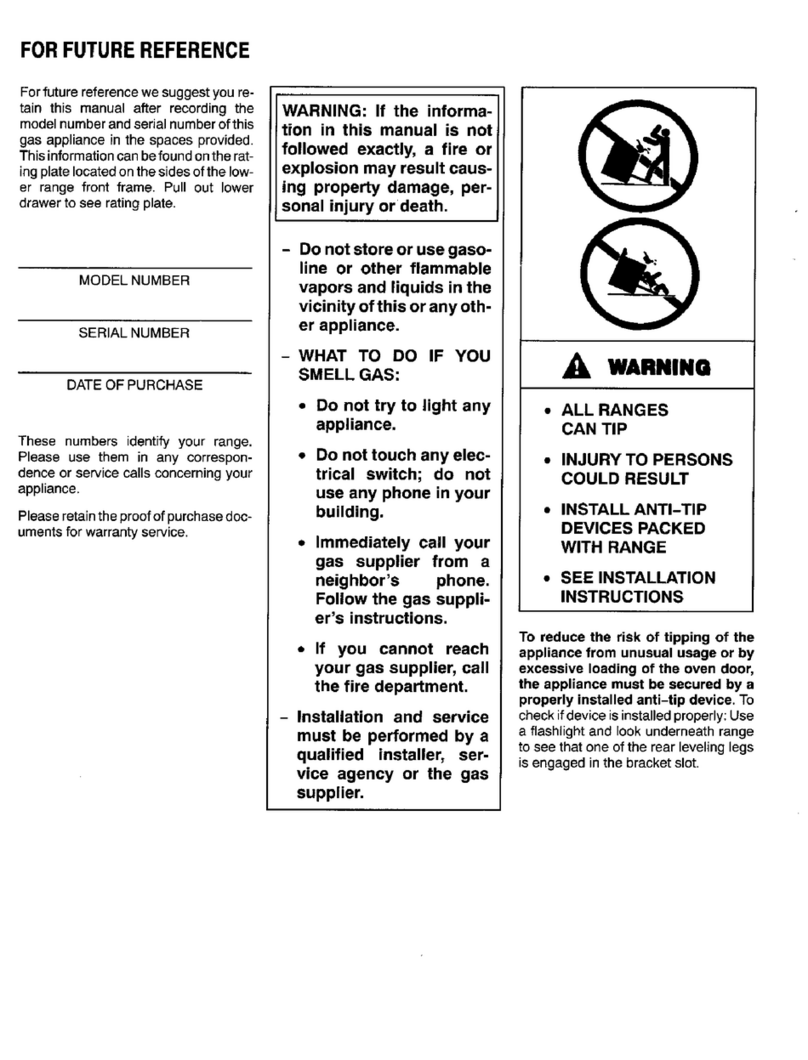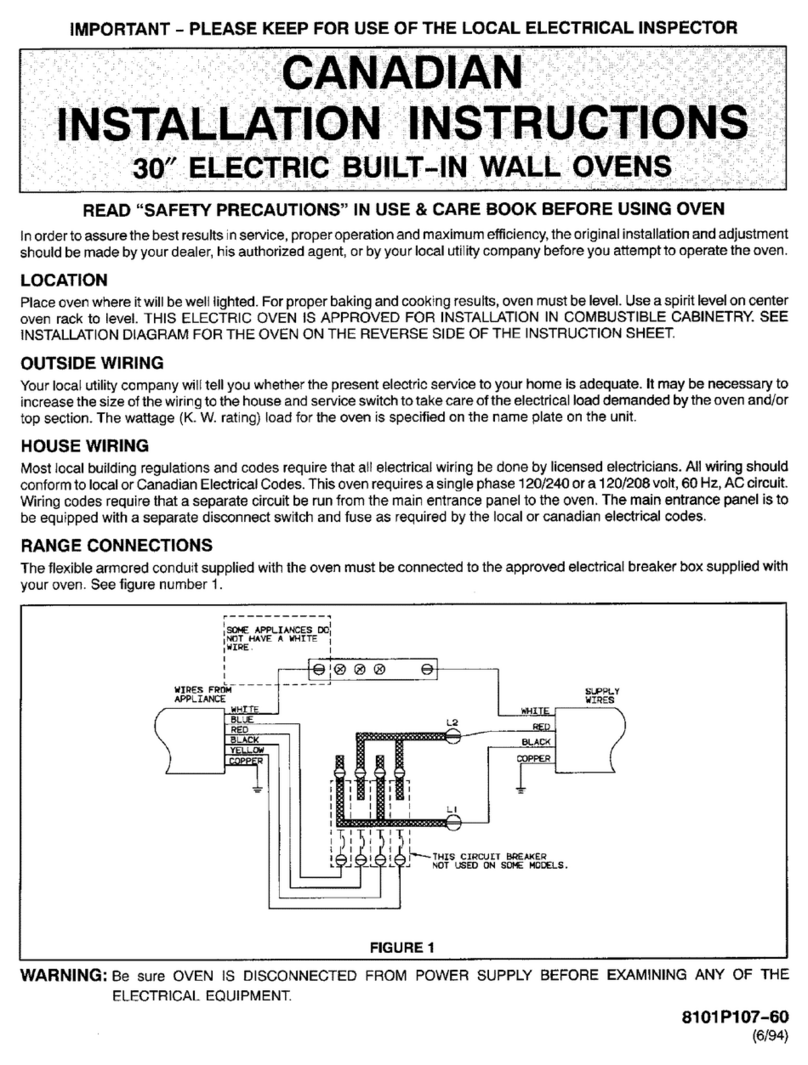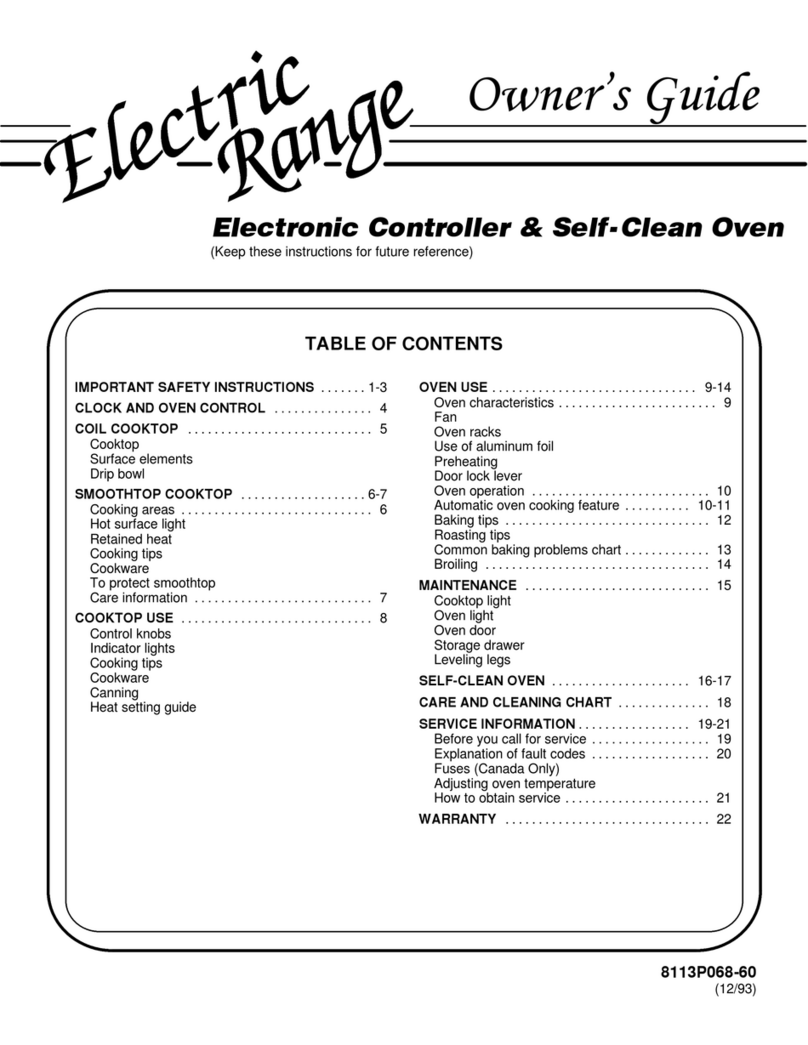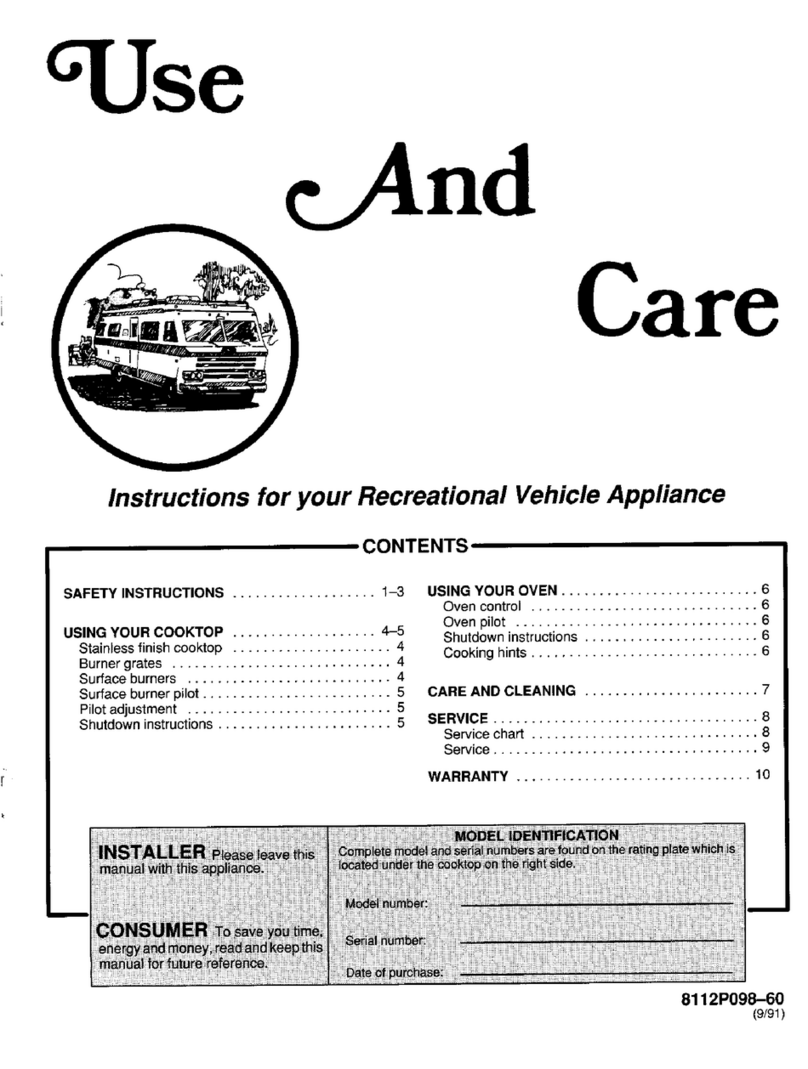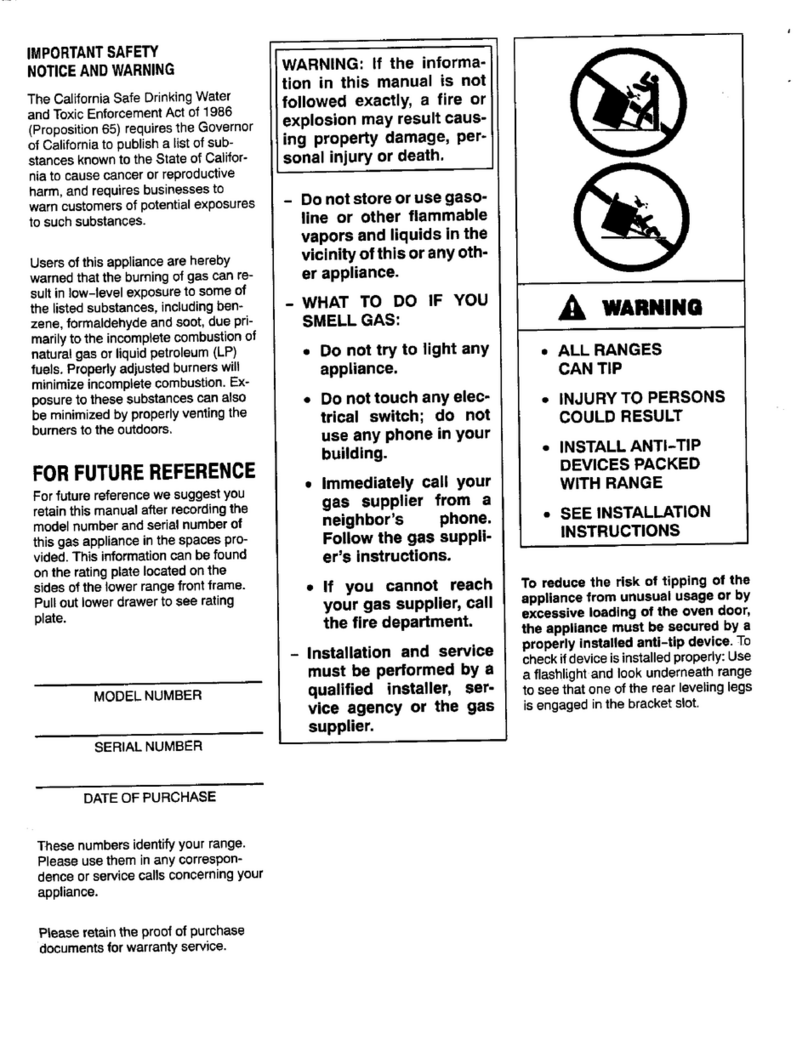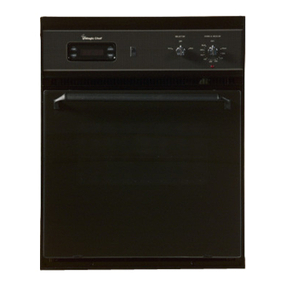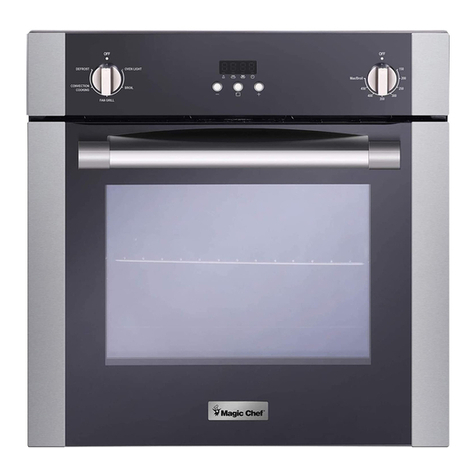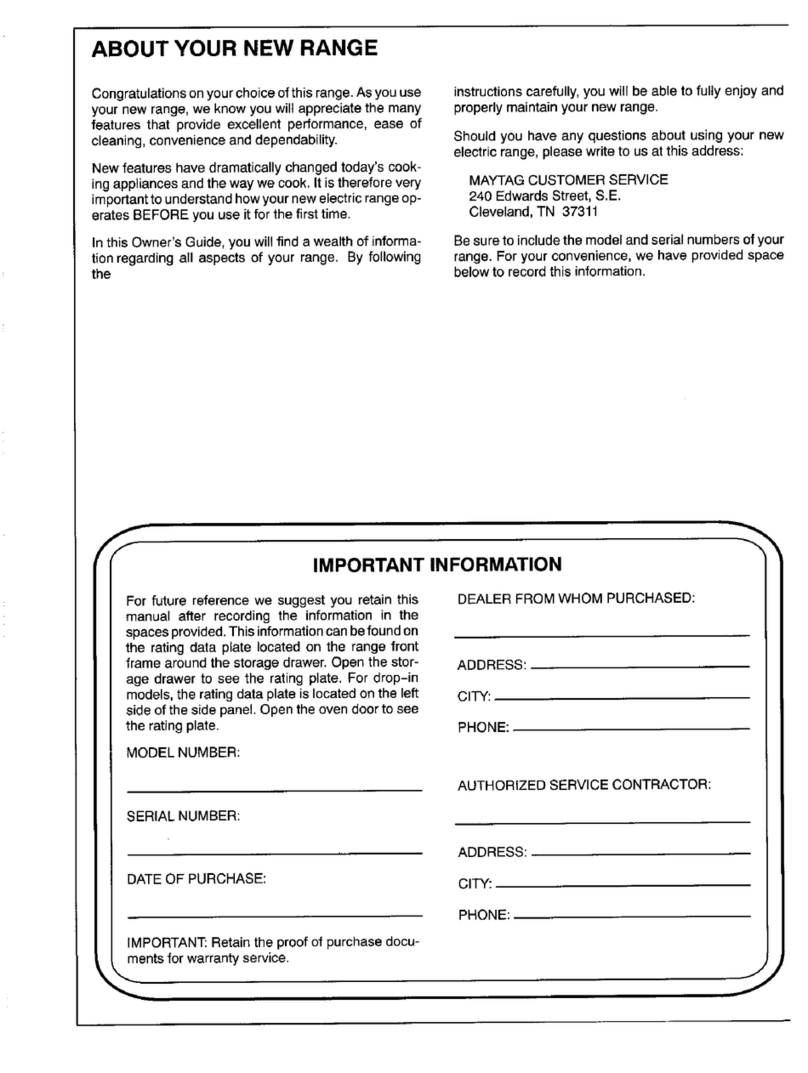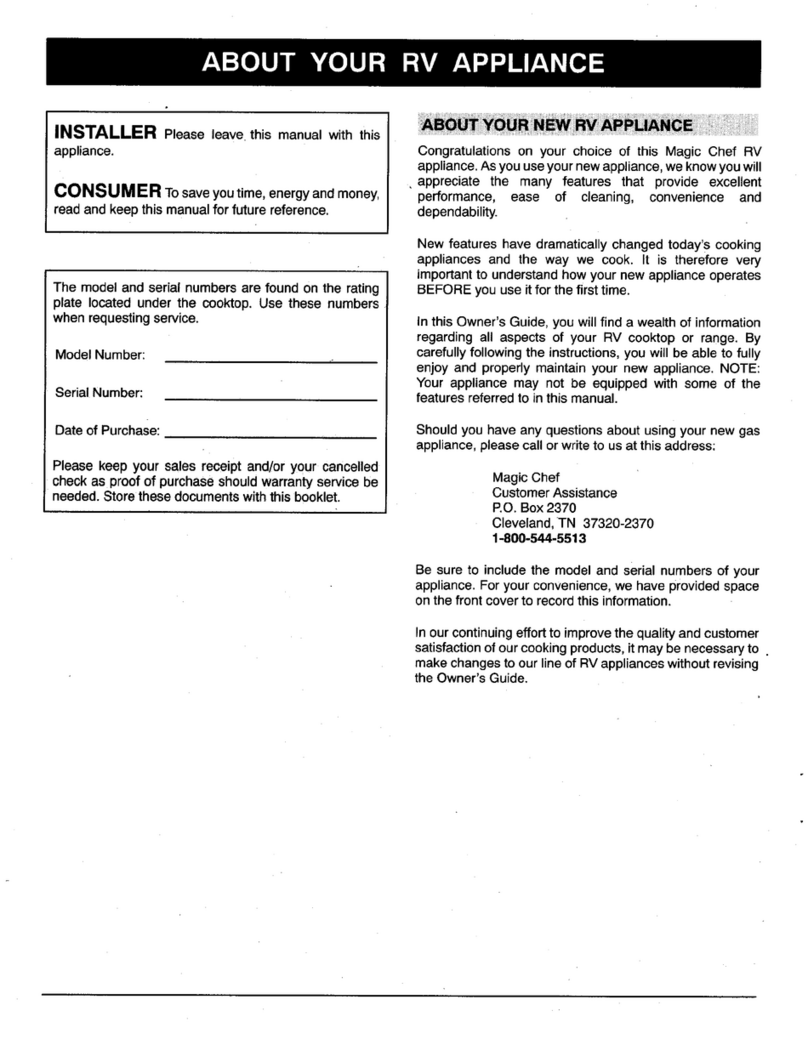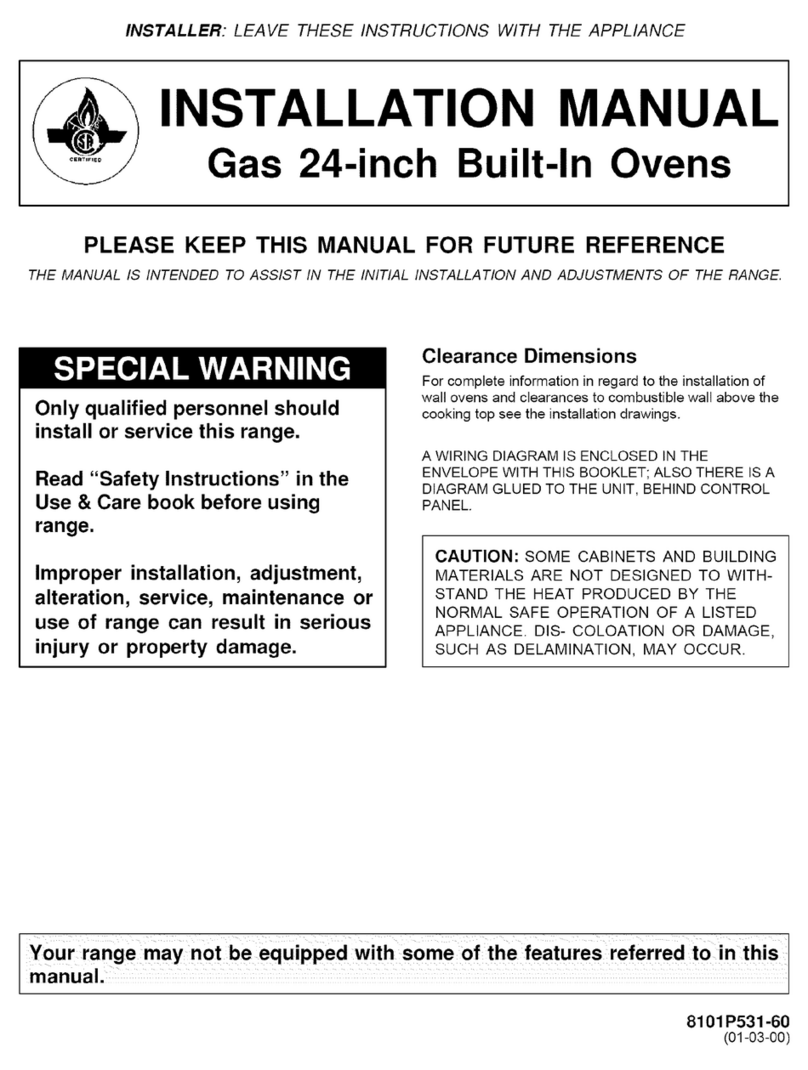USINGYOUROVEN t
HOW TO BROIL
NOTE: Broiling is done in the lower broiler oven.
Broiling is a method of cooking used for tender steaks,
chops, hamburgers, chicken, fish, and some fruits and
vegetables. For optimum results, steal(s should be at least
3/4-inches thick.
Broiling Tips
Trim excess fat to reduce spattering and smoking. Cut
slashes in the outer edges of the meat to prevent curling
during cooking.
If you plan to season the meat, it is better to do so after
the surface has browned. Salt tends to delay browning
which can result in overcooking. Salting before cooking
also draws the juices out of the meat, causing dryness.
The cooking time is determined by the distance between
the meat and the burner, the desired degree of doneness
and the thickness of the meat.
Thin cuts should be 'placed closer to the burner. Thicker
cuts should be placed further away from the burner.
For a brown exterior and rare interior, the meat should be
close to the burner. Place the pan further down if you wish
the meat well done or if spattering and smoking occurs.
Broiler Pan and Insert
Broiling requires the use of the broiler pan and insert
supplied with your appliance?it is designed to drain
excess liquid and fat away from the cooking surface to
prevent spatters, smoke and flare ups.
Never leave a soiled broiler pan'and insert in the oven
after broiling. Drippings might become hot enough to
ignite if exposed directly .tothe oven burner.
For easier clean-up, line the broiler pan (bottom piece)
with aluminum foil and spray the insert with a non-stick
vegetable coating. Do not cover the broiler pan insert with
aluminum foil as this prevents fat from draining into the
pan below.
The broiler oven can be preheated for a few minutes.
However, do not preheat the broiler pan and insert.
To Broil:
1. Turn the oven temperature knob to BROIL.
Broil longer cooking foods (chicken or pork chops) at a
lower temperature to prevent 0verbrowning. Turn the
knob to 450°F, rather than BROIL, for low temperature
broiling.
2. Preheat for 2 to 3 minutes if desired.
NOTE: Cooking times in the Broil Chart are based on a
2 to 3 minute preheat.
.
,
.
6.
Place the broiler pan on the recommended rack
position shown in the broiling chart. If the food is placed
too close to the burner, overbrowning and smoking may
occur. Broiling is always done with the door closed.
Follow the suggested times in the broiling chart. Meat
should be turned once about halfway through when the
top of the meat begins to brown.
Check the doneness by cutting a slit in the meat near
the center to check the color.
Turn the oven temperature controlto OFF and remove
the food from the oven.
Until you become more
BROILING CHART
familiar with your new oven, use the following chart as a guide when broiling foods.
FOOD
BACON
_" BEEF PATTIES, 314-inch thick
,,,,,,, ,,,,,,
STEAKS, 1-inch thick
I DONENESS
Well Done
6-INCH BROILER
BROIL POSITION
Middle
12-INCH BROILER
TOTALBROILTIME
Broilat450°F
6-9minutes
14-18 minutes
15-18 minutes
18-21 minutes
,, ,,, ,
BROIL POSITION
Middle
, ,,,,,,
..........TOTAL BROIL TIME
8 - 12 minutes
Well Done Middle Upper 15 - 18 minutes
Medium Middle Upper 12 - 14 minutes
Well Done Middle Upper 13 - 16 minutes
,........ , ,,,
CH ICKEN,
Pieces Well Done Bottom 30-35 minutes Bottom 25 - 30 minutes
........ ,........ , ,,,,,,,,, ,, ,,,,
FISH, Broil at 450_F
Fillet, 1/2-inch thick , Flaky Middle 10-14 minutes Upper 7 - 10 minutes
Steak, 1-inch thick Flaky Middle 13-16 minutes Upper 12 - 14 minutes
'HAM SLICE, 1/2-inch thick Warm Middle 8-10 minutes Upper 8 -10 minutes
(precooked)
i, • 'i '!""'" ' '""'"PORK CHOPS,'-inch thick Well Done Middle 24-28 minutes Middle 22 - 26 minutes
•ThebottombroilPOSitionforthe6-inchbroileristhebroilerbottom.Thebottompositionforthe12-inchbroileristhebottomrackposition.
